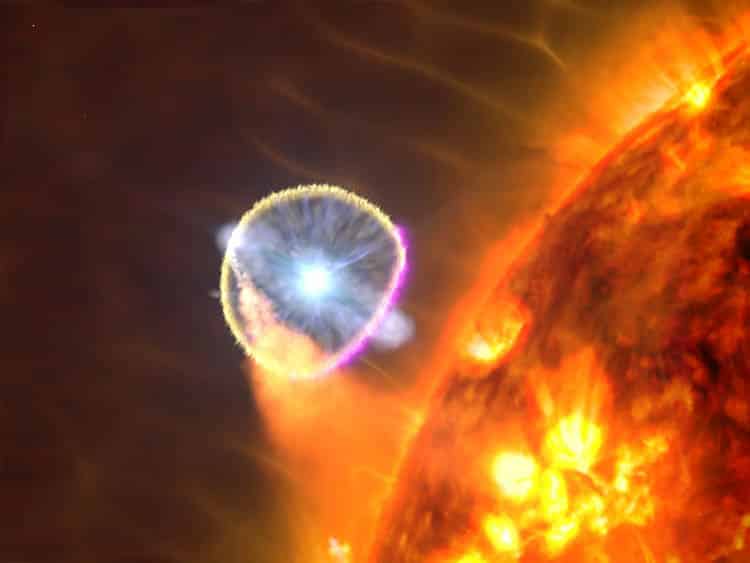Science
Related: About this forumOnce-In-A-Lifetime Stellar Event Expected To Happen This Summer
By Elizabeth Beiser on June 24, 2024

Photo: NASA's Goddard Space Flight Center/S. Wiessinger
Scientists believe we're nearing the reoccurrence of the nova T Coronae Borealis (T CrB), nicknamed the Blaze Star. It's expected before 2026, and based on recent activity, it's likely to brighten the night sky this summer. The explosion happens roughly every 80 years. So unless you're a toddler or a vampire, this is probably your only chance to witness it.
A nova is an event that happens between two stellar bodies that make up a binary star. All binary star systems include a white dwarf, the extremely dense remnants of stars that have already exhausted their fuel. They are so dense they contain the mass of our Sun within the volume of the Earth. In T CrB's case, its white dwarf is in orbit with a red giant, which is a low-density massive star nearing the end of its life before becoming a white dwarf itself.
These two stars circle each other every 228 days with the dense white dwarf pulling off matter from its red giant. As the white dwarf gains more mass, its temperature and pressure steadily increase until the ignition point for hydrogen is met. Then an explosion akin to a thermonuclear bomb going off occurs. The explosion doesn't destroy either of the stars, but it blasts the accretion disc of material the white dwarf had siphoned from the red giant back home to restart the cycle.

Artist's rendering of novae, which typically originate in binary systems containing sun-like stars.
Novae typically originate in binary systems containing sun-like stars, as shown in this artist's rendering. A nova in a system like this likely produces gamma rays (magenta) through collisions among multiple shock waves in the rapidly expanding shell of debris. (Photo: NASA's Goddard Space Flight Center/S. Wiessinger)
Scientists aren't sure why the T CrB nova seems to take place every 80 years. It might have something to do with how comparatively large the white dwarf is. They do know, however, that similar to the last two occurrences, T CrB has been growing in brightness since 2015 for seven years. Then for the past year it was dimming in magnitude. This is thought to be a sign that the nova will happen this summer. T CrB is usually too dim for it to be seen in the night sky, but it will be visible to the human eye for a few days to a week when the nova happens.
Along with the February 1946 nova, T CrB was definitely witnessed in 1866. Nineteenth century astronomers were even able to predict that it would return in 80 years from their observations. Impressively, astronomer Bradley Schaeffer has also managed to find two more likely instances of the T CrB in historical archives. In 1787, an English reverend and astronomer, Francis Wollaston, observed nova-like behavior in the same part of the sky that T CrB is.
More:
https://mymodernmet.com/t-corona-borealis-nova-2024/
captain queeg
(11,780 posts)marybourg
(13,142 posts)Frasier Balzov
(3,454 posts)Old Crank
(4,557 posts)Here in Munich.
Great stuff there. I was reading somewhere else that the white dwarf mass was something like one ton per cubic inch.